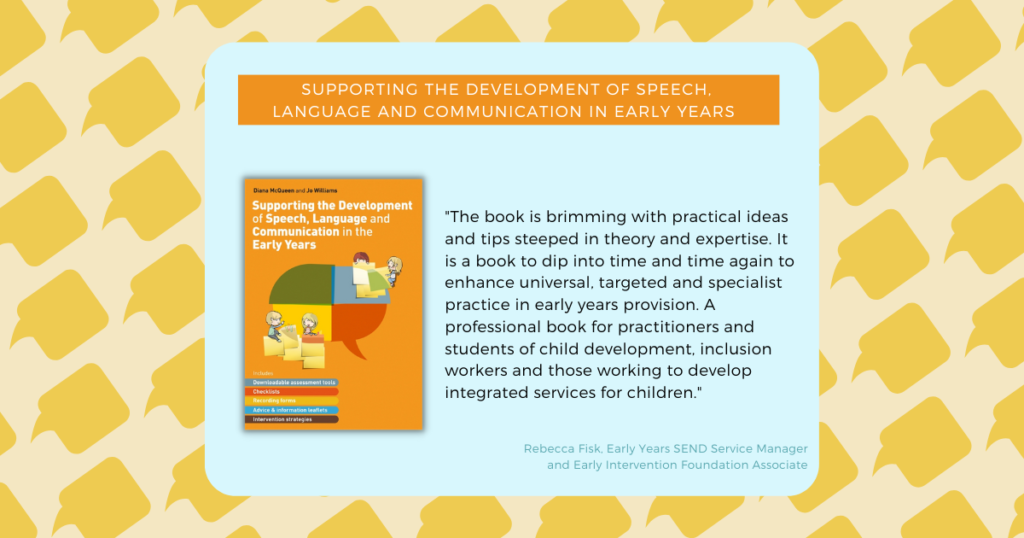
A book for the army of talented Early Years Practitioners – without whom children, families and (speech and language) therapists would be infinitely poorer.
There are plenty of statistics to show the numbers of children and young people with SLCN but also – equally, if not more, worrying – there are more and more studies which show the impact of SLCN. Readers can find powerful examples of these in the book.
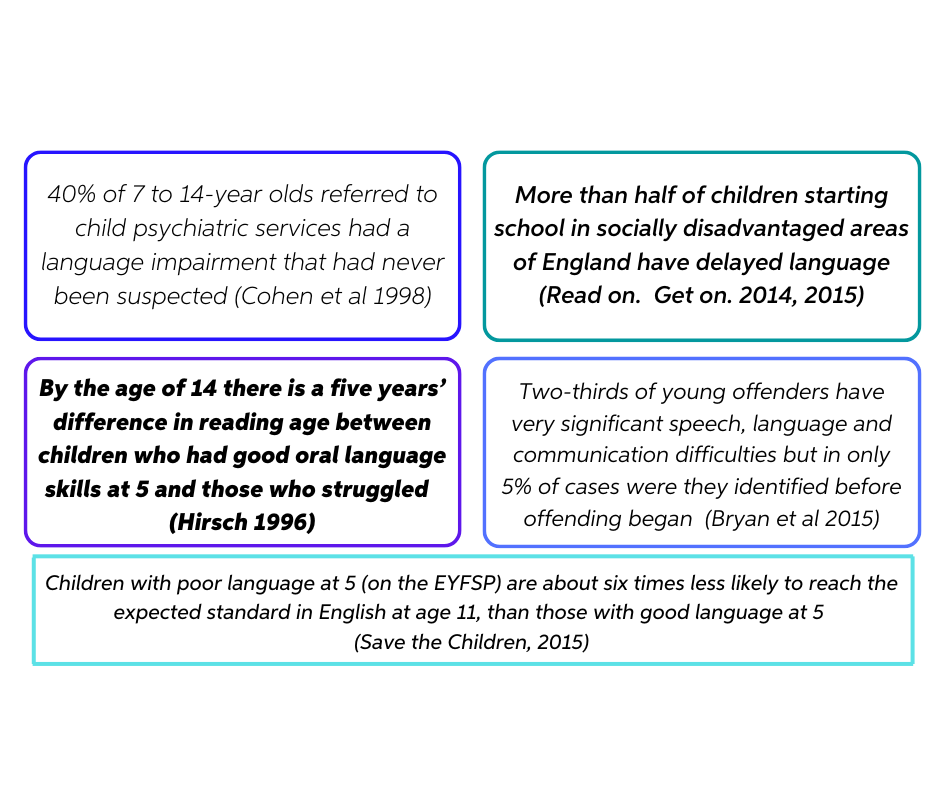
Statistics appear in numerous places – in research papers from higher education institutes, as background to SEND in papers from the DfEE, from Public Health England, from the Royal College of Speech and Language Therapists (our own professional body) and, sometimes, in the national press.
Press articles which do get an accurate handle on SLCN can, to some extent, be immediately extremely valuable in terms of raising awareness. They talk to a national audience in a way that everyone can understand. They focus on literacy levels in primary schools (usually around the time of SATS) and, often as part of a wider agenda, they trumpet the case for more support for disadvantaged children (who, it is widely recognised, do less well educationally).
Why are these press articles so valuable? Because they talk about impact: the impact of SLCN on educational, social and emotional outcomes – and ultimately the adverse impact on life-chances for thousands and thousands of children and young people.
Statistics alone can be one-dimensional ‘ X number of children have SLCN’. It’s only when we start to hear about the proven links between SLCN and social disadvantage, mental health, illiteracy, offending and unemployment, that it all suddenly comes to life. It becomes very real: we can all relate this to children in our care – and in some the behavioural trends are already nascent.
The opportunity to raise awareness via TV exposure does sometimes present itself but is often focused on specific disorders or conditions such as autism, selective mutism or hearing impairment. Way back in 2017 BBC Breakfast TV high-lighted the ‘Hidden Disability’ and filmed activity in the Nursery at one of our primary schools in Birmingham. Despite considerable footage being taken, much of it fell victim to the editing process – which is a risk we have encountered on more than just this occasion! The aim of our setting was to identify those problems which are not glamorous or sexy or necessarily as well-known – there will be around X% of children with SLCN in every classroom– and considerably more since the pandemic.
There were two significant points which did make it to air however, critical factors in support of more help for children with SLCN. Firstly, one of our 4 year-olds chose his moment on prime time telly to join two words together for the very first time. Every EYP will see this for the massive moment that it was – a 4 year-old just beginning to put two words together – half a lifetime later than what we would expect. The second thing was that we managed to say…
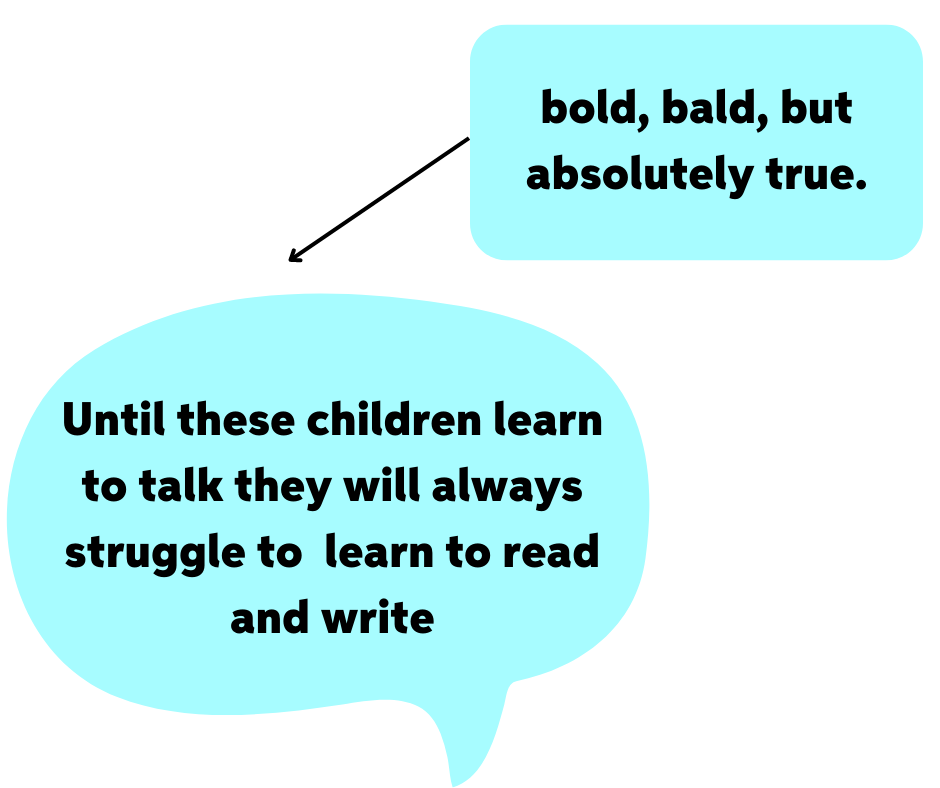
Speech, Language & Communications needs (SLCN) are the responsibility of us all – parents, health professionals, educators and legislators. We all have a role to play.
We must identify early those children who are failing behind (or are at risk of doing so) because, for whatever reason, their speech and language skills haven’t developed as they should ….. and then we must do something to help – for some children this is as crucial as enabling them to make basic needs known, for others it means supporting them to access the curriculum.
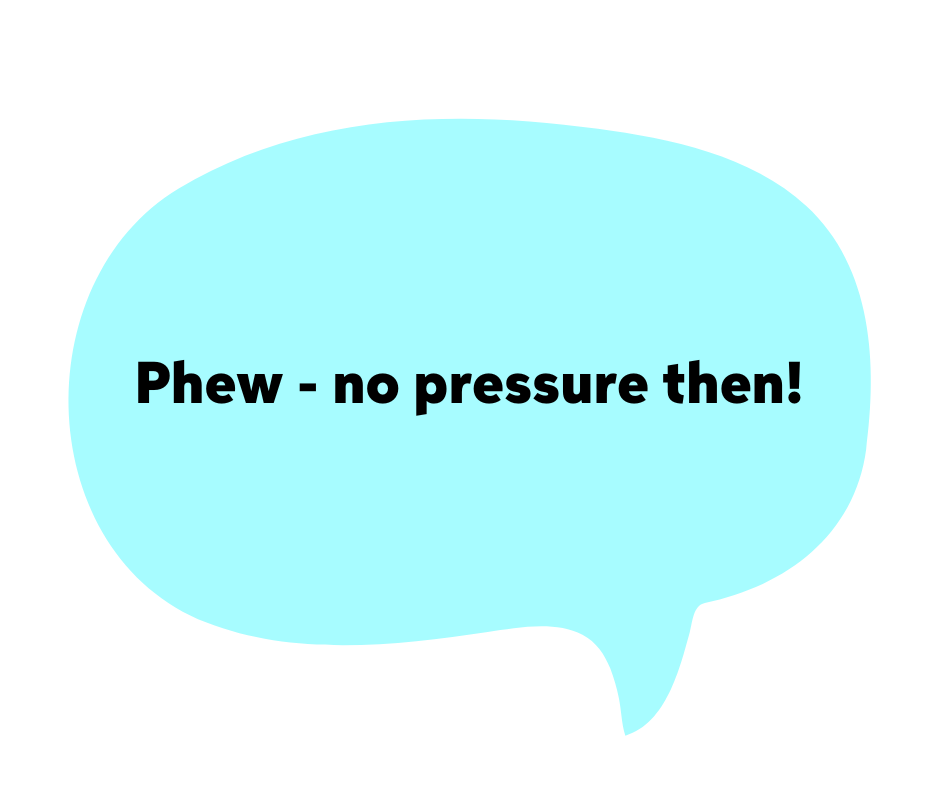
Yes, at every level, society has a responsibility to do something for the thousands of children whose lives will be compromised because they have SLCN and to address the scandal of unmet need. The purpose of this article is to focus on one group, the army of Early Years Practitioners (EYPs) and Teaching Assistants (TAs) who on a daily basis, take on the challenge of SLCN.
They care, they are motivated and they are in it for the long haul – as the (now) Princess of Wales said in her keynote speech, when ‘The state of the nation: understanding public attitudes to the early years’ was published in November 2020.
‘It is a brave thing to believe in an outcome – in a world even – that might not be fully felt for a generation or more. But what you do isn’t for the quick win – it is for the big win……I truly believe that big change starts small.’
For the many years that Jo and I have been practicing speech and language therapists – both in our former lives in the NHS but more so during the 10 years since we have been working independently, EYPs have been crucial to the success of what we do. They are an immensely practical band of people, full of ideas and enthusiasm and thirsty for knowledge so they can grow and develop their own skills and do the best they can for the children in their care.
We have met EYPs who, in a different life, would make fabulous speech and language therapists. Conversely, we know therapists who started life as TAs. Either way, they bring to the profession the richness of their practical experience of working with children with many different types of SEND. The book does talk about working as a speech and language therapist – because it’s rarely too late to consider a change of career – these days different models of training are available, including part-time courses and apprenticeship schemes
It has long been our view that if there was a proper strategic plan to harness this talented, ready-made workforce, the impact could be huge. The acute shortage of speech and language therapists is no secret – and in many ways is no surprise as the opportunities for actual hands-on therapy for children who really aren’t going to make much headway without it – are few and far between as the public sector wrestles with huge waiting lists and diminishing resources. That said, if unlimited funding was to be made available today, it would be several years before there were enough suitably qualified and competent therapists to make a difference. However, make no mistake: this isn’t about making the assumption that EYPs can just ‘take on’ responsibility for SEND (including SLCN) in their setting. However, with the right kind of training there is plenty they can do – and do very well indeed.
EYPs are hard-wired to want to help: they are always going to do something when faced with a child who is failing. But being willing is not enough. So… why not give them the tools to do the right thing, to identify the problem and what to do about it – and above all to understand why. To deliver with confidence a language-rich curriculum which supports every child; to advocate for a communication-friendly environment, to be able to identify children who are struggling – and be able to say why that might be – and then be ready and able to set up targeted interventions to address the problem. And finally, like all professionals, recognise when additional specialist help is needed and be comprehensively prepared to fight for it.
The problem is huge and there are many different aspects – all of which are complex and far-reaching, none of which operate in isolation.
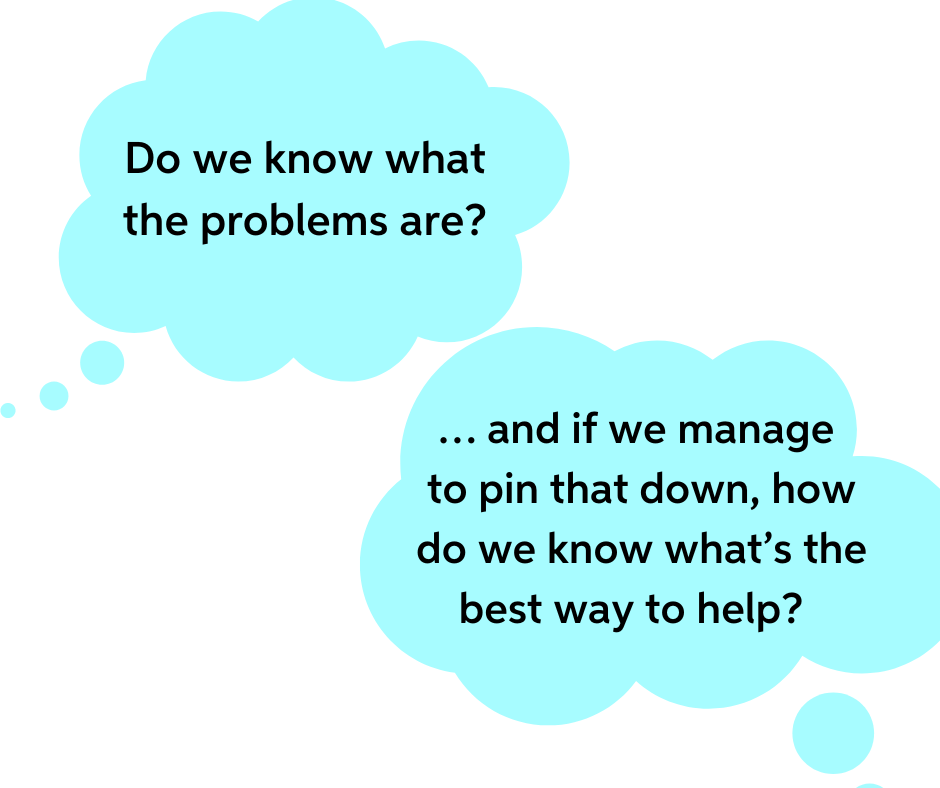
Most people could be forgiven for hastily cramming this enormous problem into the ‘too difficult box and firmly replacing the lid.
Take heart! It doesn’t have to be complicated. Imagine two major strands of approach (our colleagues in education are used to the concept of strands as they run through many curriculum documents):
Strand A: prevention (putting things in place to keep speech and language skills following the normal developmental path).
Strand B: intervention (what do we do when problems become apparent, despite our best efforts).
Now add a third strand – early identification and slide that in between prevention & intervention.
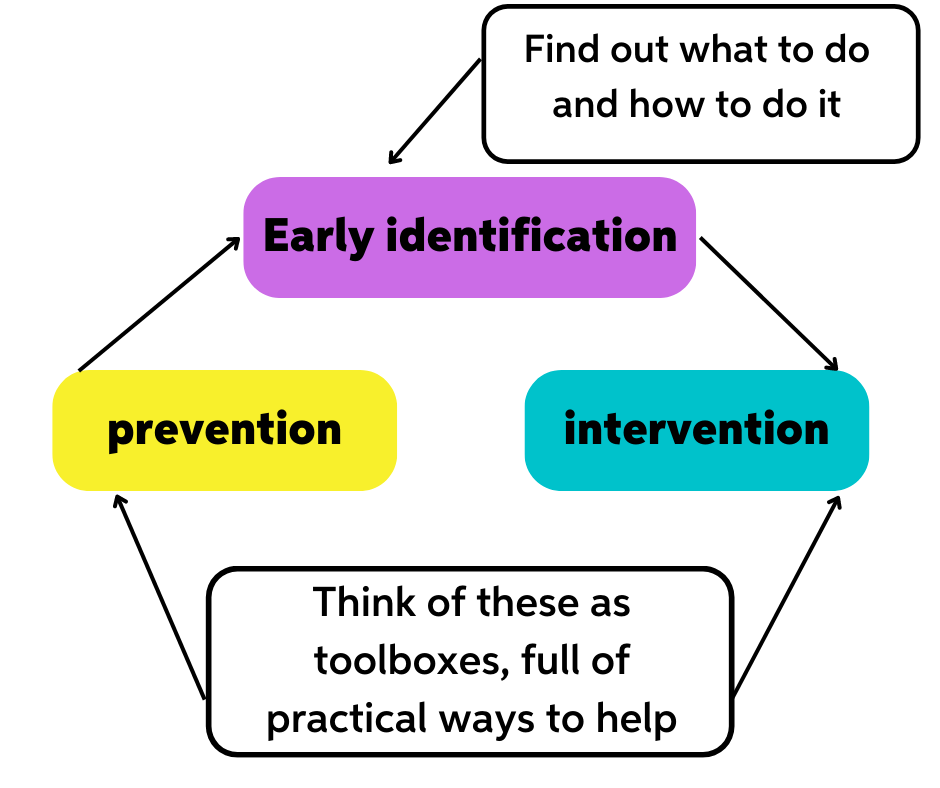
Basically this is what the book is about although readers will find much, much more. Here is a flavour…
- How speech and language skills develop
- What can go wrong and why (and what to do about it)
- Why language is so important for literacy and numeracy (and every other curriculum area too!)
- Lots of practical ideas about how to set up and run various targeted intervention groups
- What to look for (and the questions to ask) if you are considering commissioning a speech and language therapy service in your setting
Supporting the Development of Speech, Language and Communication in Early Years is available now.
If you liked this article, why not join our mailing list to receive exclusive content and discounts? Sign up to the mailing list here.